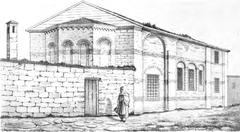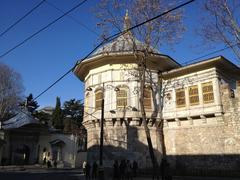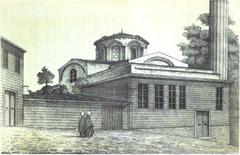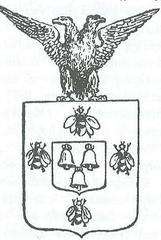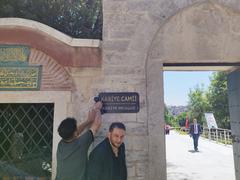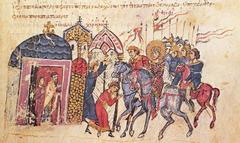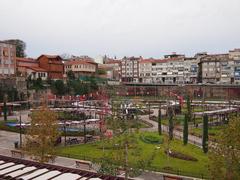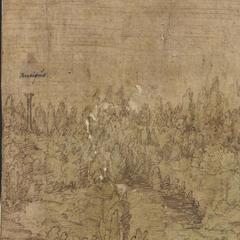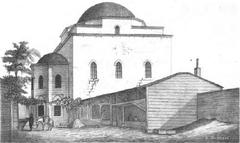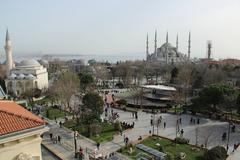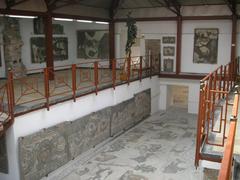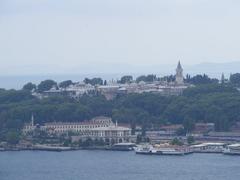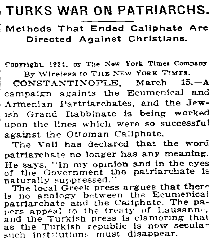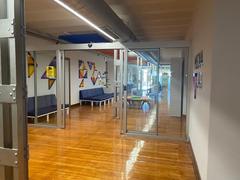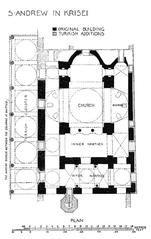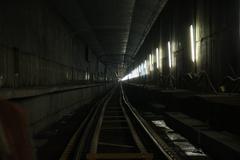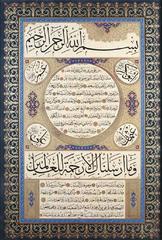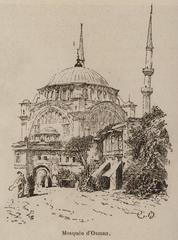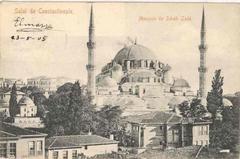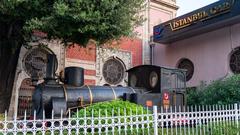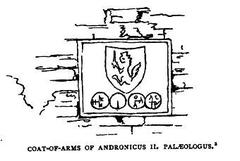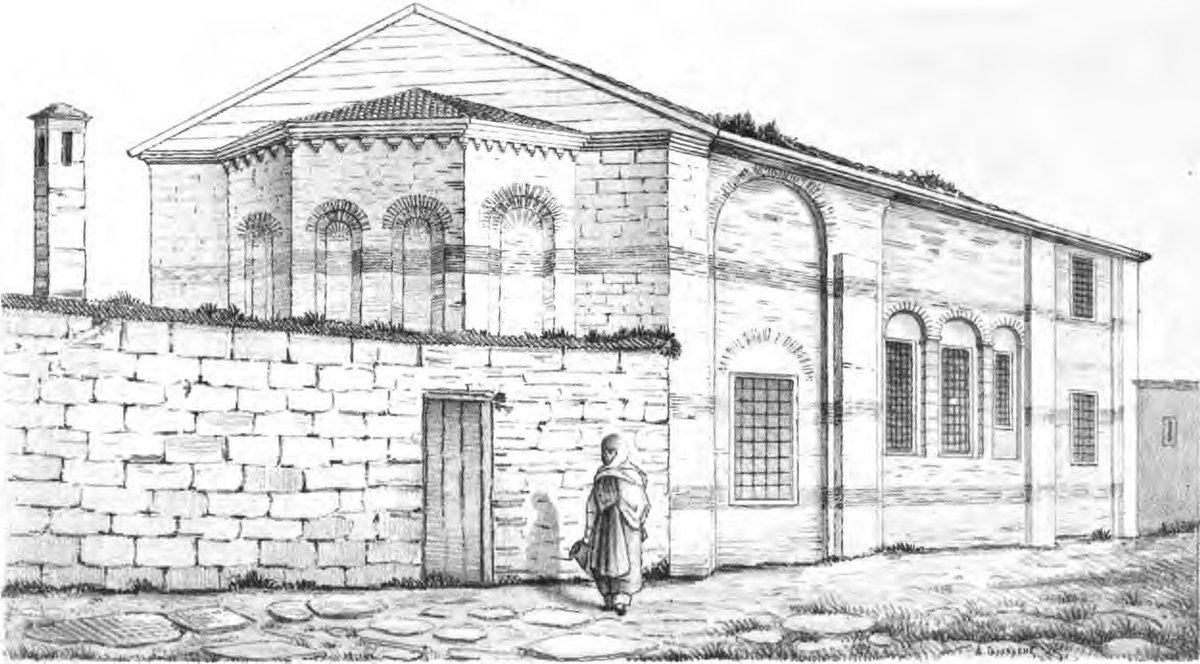
Toklu Dede Mosque: Complete Guide to Visiting Hours, Tickets, and Fatih Historical Sites
Date: 15/06/2025
Introduction
Toklu Dede Mosque, located in Istanbul’s historic Fatih district, is a poignant reflection of the city’s layered past, spanning the Byzantine and Ottoman eras. Though the mosque itself no longer stands, its history, archaeological remnants, and the surrounding neighborhood remain significant for travelers seeking to explore Istanbul’s rich heritage. This guide brings together historical context, practical visiting information, and nearby attractions, offering an in-depth look at one of the city’s lesser-known but culturally resonant sites.
For further background and references, see The Byzantine Legacy, Fatih Municipality’s historical overview, Wikipedia, and Kultur Envanteri.
Historical Background
Byzantine Foundations
Originally constructed in the 11th century, Toklu Dede Mosque began as a modest Byzantine church. Archaeological evidence, including stamped bricks from the 5th and 6th centuries, highlights the site’s ancient roots and the resourcefulness of Byzantine builders who often reused materials from earlier structures (The Byzantine Legacy). Its location within the Ayvansaray neighborhood, near the city walls, reflects both spiritual and strategic significance during the Byzantine period.
Ottoman Transformation
Following the Ottoman conquest of Constantinople in 1453, the church was converted into a mosque. Islamic features such as a mihrab were added, while much of the Byzantine structure was preserved. The name “Toklu Dede” likely honors a local Sufi or dervish, a tradition that lent neighborhood mosques a distinct character and community role (Fatih Municipality).
Decline and Disappearance
The mosque remained a humble place of worship throughout the Ottoman era, retaining its Byzantine character with minimal alterations. It suffered extensive damage in a 1929 fire, after which only parts of the apse and south wall survived (The Byzantine Legacy). By the mid-20th century, all visible remains were lost to urban development (Kultur Envanteri).
Archaeological and Cultural Importance
Despite its destruction, Toklu Dede Mosque is notable for representing the transition from Byzantine to Ottoman religious architecture. Early 20th-century documentation, including photographs and surveys, contributes to our understanding of its significance. The mosque’s story exemplifies Istanbul’s tradition of reusing, adapting, and layering sacred spaces.
Visiting Information
Can You Visit Toklu Dede Mosque?
No, the Toklu Dede Mosque no longer exists as a standing structure. Residential buildings now occupy the site, and there are no visible remains or official signage (Kultur Envanteri). The mosque’s former location is on Toklu İbrahim Dede Street, in the heart of the Fatih district.
Site Access and Hours
- Site Condition: No accessible mosque structure or remains.
- Visiting Hours/Tickets: Not applicable; the site cannot be entered or toured.
- Accessibility: The street is public, but there are no facilities or information panels.
How to Explore the Area
While the mosque itself cannot be visited, the surrounding Ayvansaray and Fatih neighborhoods are rich with history. Walking the streets allows visitors to absorb the atmosphere of this storied district and appreciate its layered past.
Nearby Attractions
The Fatih district is home to some of Istanbul’s most celebrated historical sites. Visitors exploring the area where Toklu Dede Mosque once stood can easily access:
- Fatih Mosque Complex: The district’s grand imperial mosque (Property Turkey).
- Chora Church (Kariye Museum): Renowned for its Byzantine mosaics and frescoes.
- Walls of Constantinople: Impressive city fortifications adjacent to the area (Walls of Constantinople Information).
- Grand Bazaar: One of the world’s oldest and largest covered markets.
- Fener and Balat Districts: Historic neighborhoods with colorful streets and authentic eateries.
Guided walking tours often include these sites and can provide valuable historical context.
Practical Advice and Travel Tips
- Dress Code: When visiting active mosques nearby, wear modest clothing and women should bring a headscarf (Walks in Istanbul).
- Transport: Fatih is easily accessible via tram, bus, and taxi. Main tram stops include Laleli-Üniversite and Aksaray.
- Accessibility: Streets are narrow and uneven; plan accordingly if you have mobility challenges.
- Photography: At the former mosque site, be respectful of residents’ privacy. Photography is permitted in active mosques outside prayer times—always avoid photographing worshippers without permission.
Preservation Status
While Toklu Dede Mosque no longer stands, its legacy persists in historical documentation and the urban memory of Fatih. Preservation efforts in Istanbul increasingly focus on documenting lost or endangered sites, raising public awareness about the city’s vulnerable architectural heritage (The Byzantine Legacy).
Frequently Asked Questions (FAQ)
Q: Can I visit Toklu Dede Mosque?
A: The mosque no longer exists and cannot be visited.
Q: Are there visiting hours or entrance fees?
A: Not applicable—the site is not accessible.
Q: Are there guided tours that include this site?
A: While the mosque itself is not visitable, guided tours of the Fatih district often include nearby historical sites.
Q: Is the area accessible for disabled visitors?
A: The former mosque site has no facilities; some nearby attractions may have limited accessibility.
Q: What else is there to see in the area?
A: Fatih Mosque, Chora Church, city walls, and the Grand Bazaar are all close by.
Additional Resources
- Wikipedia: Toklu Dede Mosque
- The Byzantine Legacy
- Fatih Municipality: Fatih in History
- Kultur Envanteri: Toklu Dede Mosque
- Wikimedia Commons: Toklu Dede Mosque Images
- Property Turkey: What to Do in Fatih
- Walks in Istanbul: Dress Code for Mosques
- Istanbul Travel Blog: Mosque Opening Hours
Conclusion
Though the Toklu Dede Mosque no longer stands, its story is an essential chapter in Istanbul’s ever-evolving history. Exploring the Ayvansaray and Fatih districts allows visitors to connect with this legacy and the broader tapestry of Byzantine and Ottoman culture. Make the most of your visit by discovering the area’s many surviving landmarks and utilizing modern resources like the Audiala app for curated walking tours and updated information.
Download the Audiala app for personalized guides, and follow us on social media for the latest updates on Istanbul’s hidden historical gems.
